The booklet features the first English translation of lyrics by Thai rappers P9D and Liberate P, who Judha describes as “the poets for our generation”. Both artists have released singles criticising the military government, and Liberate P is a member of Rap Against Dictatorship. (The booklet misnames his song Oc(t)ygen as “OCT(Y)GEN”.)
23 June 2020
Shout Out or Shut Up (?)
The booklet features the first English translation of lyrics by Thai rappers P9D and Liberate P, who Judha describes as “the poets for our generation”. Both artists have released singles criticising the military government, and Liberate P is a member of Rap Against Dictatorship. (The booklet misnames his song Oc(t)ygen as “OCT(Y)GEN”.)
21 June 2020
Give Us a Little More Time
The main gallery space is occupied by a four-screen video installation, showing a twelve-minute montage of overlapping newspaper headlines and photos. This rapid-fire video collage remixes and distills six years of mainstream press coverage of the military government.
The exhibition’s ironic title is a line from a propaganda song released by the junta, Returning Happiness to the Thai Kingdom (คืนความสุขให้ประเทศไทย), part of which is sampled on the video soundtrack. Arnont Nongyao’s video Ghost Rabbit and the Casket Sales (กระต่ายผี กับ คนขายโลง) also samples the song, as does Thunska Pansittivorakul’s documentary Homogeneous, Empty Time (สุญกาล).
Chulayarnnon’s recent film 100 Times Reproduction of Democracy (การผลิตซ้ำประชาธิปไตยให้กลายเป็นของแท้) is another post-coup political critique, and will be shown at CityCity on 9th August, when the exhibition closes. (Give Us a Little More Time was originally scheduled for 25th April to 21st June, though the opening was delayed due to the coronavirus pandemic.)
19 June 2020
Posters: A Global History
The last comprehensive book on the subject, The Poster by Alain Weill, was published more than thirty years ago. Weill covered Chinese and Japanese posters in addition to more familiar Western examples, though Guffey’s book breaks new ground with coverage of posters from India, Africa, and the Middle East. Posters features only 100 colour illustrations, though these are supplemented by vintage photographs, historical newspaper cartoons, and other ephemera.
Once Upon a Time in the West:
Shooting a Masterpiece
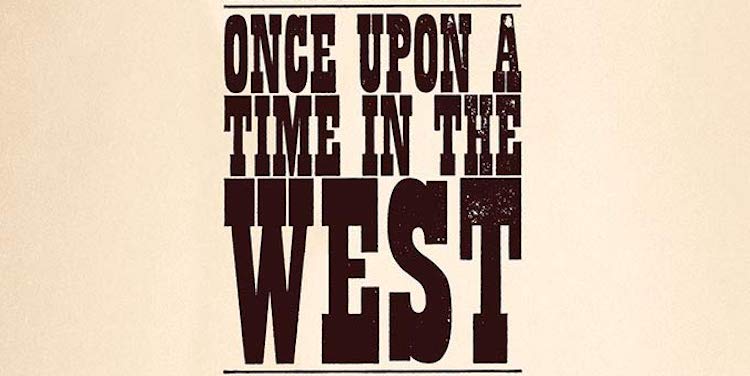
Once Upon a Time in the West: Shooting a Masterpiece, by Christopher Frayling, is a definitive monograph on Sergio Leone’s epic Western (C’era una volta il West). The book includes interviews with Leone and his collaborators, a day-by-day production history, and numerous previously-unpublished images.
Frayling is one of our greatest cultural historians, and the world’s leading expert on Leone. His Something to Do with Death is a comprehensive biography of the director, and Spaghetti Westerns and Once Upon a Time in Italy are essential guides to the Spaghetti Western. Once Upon a Time in the West: Shooting a Masterpiece is Frayling’s third book for Reel Art Press, the others being Frankenstein and The 2001 File.
Frayling is one of our greatest cultural historians, and the world’s leading expert on Leone. His Something to Do with Death is a comprehensive biography of the director, and Spaghetti Westerns and Once Upon a Time in Italy are essential guides to the Spaghetti Western. Once Upon a Time in the West: Shooting a Masterpiece is Frayling’s third book for Reel Art Press, the others being Frankenstein and The 2001 File.
The Art of Earth Architecture
The subtitle—Past, Present, Future— might seem clichéd, though it’s an apt summary of the book’s three key features: a sweeping historical survey, a guide to contemporary trends, and a manifesto for change. That last element is rather excessive, with Dethier’s repeated evangelising about the benefits of raw earth, though the 450 photographs and global coverage make this a definitive book on earth architecture.
The Art of Earth Architecture is one of several recent books on architectural materials. Others include Concrete, Brick, Stone, and Wood (a series by William Hall); Glass in Architecture (by Michael Wigginton); Brick (by James W.P. Campbell); Architecture in Wood (by Will Pryce); Arish (by Sandra Piesik); and Corrugated Iron (by Simon Holloway and Adam Mornement).
The Room Where It Happened
The NSC signed off on the manuscript at the end of April, though Bolton’s successor as national security advisor, Robert O’Brien, argued that “the manuscript described sensitive information about ongoing foreign policy issues”, according to a lawsuit filed on 16th June. The following day, the Justice Department sought an emergency injunction, arguing that the manuscript “still contains classified information”.
The publisher plans to contest the Trump administration’s lawsuits, and publication is scheduled for 23rd June. The Room Where It Happened is currently Amazon’s highest-selling book, based on pre-orders, and Trump’s attempts to suppress it seem highly counter-productive. This is a repeat of the controversy surrounding Michael Wolff’s book Fire and Fury, which also became a bestseller following Trump’s legal threats against it.
Like Fire and Fury, Fear, and A Very Stable Genius, The Room Where It Happened includes highly damaging allegations. Bolton writes that, at a meeting with Chinese President Xi Jinping, Trump “turned the conversation to the coming US presidential election... pleading with Xi to ensure he’d win”. Trump’s exact words were redacted by the NSC—Bolton originally quoted Trump, “but the government’s prepublication review process has decided otherwise”—though Vanity Fair revealed that Trump told Xi: “Buy a lot of soybeans and wheat and make sure we win.”
18 June 2020
Uncle Boonmee
Who Can Recall His Past Lives
17 June 2020
Le jour se lève (blu-ray)
Le jour se lève was released on blu-ray by Studio Canal for its 75th anniversary in 2014. This restored version features two minutes of additional footage—including a rather risqué shot of Arletty in the shower—censored by the French government on the film’s original theatrical release.
16 June 2020
Apropos of Nothing
In the book, Allen gives a detailed—though, naturally, one-sided—account of the ensuing custody case. For example, in his summing up, judge Elliott Wilk wrote: “The evidence suggests that it is unlikely that [Allen] could be successfully prosecuted for sexual abuse. I am less certain, however, than is the Yale-New Haven [child psychology] team, that the evidence proves conclusively that there was no sexual abuse.” Allen quotes only the first sentence. He also paints Farrow as “an unhinged and dangerous woman” and insinuates bias on the part of the prosecution, while glossing over the judge’s criticisms of his own parenting.
To borrow a line from Stardust Memories, the best parts of Allen’s autobiography are the “early, funny ones.” (I say parts because there are no chapters or headings.) When he’s writing about happier times (especially his childhood and his relationship with Diane Keaton), the jokes come thick and fast. But his account of his recent films feels much more perfunctory.
13 June 2020
The Last President of Europe
The book begins with a brief recap of Macron’s domestic reforms and the ‘gilets jaunes’ (‘yellow vests’) protests against his government. This section is overly sympathetic to Macron, with the crisis considered largely from his perspective. (Three paragraphs begin with “Macron believes...”, for example.) Macron is portrayed as a victim of the protesters—his guards “pushed him inside his limousine as the menacing crowd approached”—and their anger is presented as discourteous to the office of the presidency.
Whereas Sophie Pedder’s Revolution française focused on Macron’s domestic agenda, The Last President of Europe is mainly concerned with foreign policy. There are chapters on Macron’s bilateral relations with Angela Merkel, Vladimir Putin, Xi Jinping, and, of course, Donald Trump. (The US President apparently asked Macron flatly: “Why don’t you leave the European Union?”, rendering the unflappable Macron speechless.)
02 June 2020
Wat Nong Tao
According to the National Office of Buddhism provincial head, the mural should show Sitang gazing at the Buddha rather than a citrus fruit. Charanpat Kaewum, who painted the mural, has agreed to alter it.
Bangkok Screening Room

Bangkok Screening Room will reopen its doors on 9th June, following the enforced two-month shutdown due to the coronavirus pandemic. Hollywood’s greatest musical, Singin' in the Rain, will be shown on 9th, 10th, 11th, 12th, 13th, 14th, 16th, 17th, 18th, 20th, and 21st June. Werner Herzog’s epic Aguirre, the Wrath of God (Aguirre, der Zorn Gottes) is screening on 9th, 10th, 11th, 12th, 13th, 14th, 17th, 18th, 19th, 20th, and 21st June.
01 June 2020
Farewell My Concubine
29 May 2020
Daily Mail

Daily Mail film critic Brian Viner has selected his 100 favourite English-language films, and the list is published in today’s newspaper (p. 47). The lack of foreign-language titles is unsurprising, as the Mail is a mainstream tabloid. More unusual is the omission of critically acclaimed films such as Citizen Kane and Vertigo, as Viner acknowledges: “I’m aware that I’ve left out lots of all-time classics.” The 100 titles are his personal favourites—he clearly enjoys comedies—rather than the greatest films of all time, which is a key distinction. Perhaps inevitably, the top spot goes to The Godfather.
20 May 2020
Team of Five
Brower also spoke to the incumbent, Donald Trump, and the book begins with her Oval Office interview. Trump showed Brower a letter he had received from Kim Jong Un, presumably the same one that he showed to another interviewer, Doug Wead. In both cases, Trump used the document to give the illusion of bringing the interviewers into his confidence: he told Wead that his advisors “don’t want me to give these to you”, and he told Brower that she “was not meant to see this,” though he had already Tweeted the letter months earlier.
15 May 2020
Sunset Boulevard (blu-ray)
13 May 2020
Il Re di Bangkok
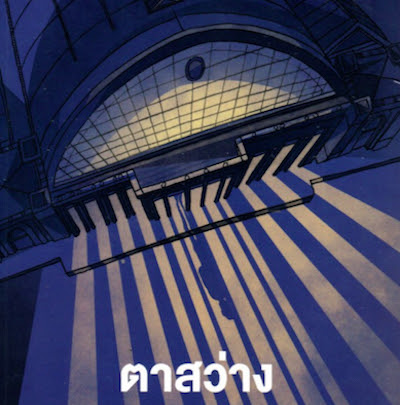
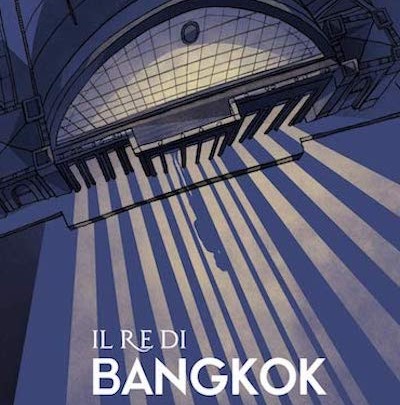
The graphic novel Il Re di Bangkok (‘the king of Bangkok’), was published in Italian last year, and has now been translated into Thai. The book was written by Claudio Sopranzetti and Chiara Natalucci, with illustrations by Sara Fabbri. (The Thai edition has been self-censored—on pp. 93, 157, and 205—though the Italian edition is unexpurgated.)
The title character, Nok, is a blind lottery-ticket vendor from Isaan who travels to Bangkok for a better life. Economic migration from upcountry to the capital is commonplace, and was a standard theme of politically-conscious writers and directors in the mid-1970s. Nok becomes increasingly politically engaged during his time in Bangkok, as he lives through the 1992 ‘Black May’ massacre, the ‘tom yum kung’ economic crisis, the rise and fall of Thaksin Shinawatra, the 2006 coup, and the red-shirt protests. The book ends as the red-shirts are massacred by the military, an event that took place exactly a decade ago.
For its Thai publication, Il Re di Bangkok was retitled ตาสว่าง (ta sawang), a term describing the sense of political awakening experienced by Nok. Several of the Thai filmmakers interviewed for the forthcoming book Thai Cinema Uncensored have explained their own feelings of newfound political enlightenment: Pen-ek Ratanaruang (“somebody like me, who five years ago had no interest in politics at all”), Yuthlert Sippapak (“I never gave a shit about politics. But right now, it’s too much”), Chulayarnnon Siriphol (“I turned to be interested in the political situation”), Thunska Pansittivorakul (“I started to learn about politics”), Apichatpong Weerasethakul (“I was politically naïve”), and Nontawat Numbenchapol (“I was a teenager, a young man not interested in politics so much”) all discussed their personal experiences of ta sawang.
The title character, Nok, is a blind lottery-ticket vendor from Isaan who travels to Bangkok for a better life. Economic migration from upcountry to the capital is commonplace, and was a standard theme of politically-conscious writers and directors in the mid-1970s. Nok becomes increasingly politically engaged during his time in Bangkok, as he lives through the 1992 ‘Black May’ massacre, the ‘tom yum kung’ economic crisis, the rise and fall of Thaksin Shinawatra, the 2006 coup, and the red-shirt protests. The book ends as the red-shirts are massacred by the military, an event that took place exactly a decade ago.
For its Thai publication, Il Re di Bangkok was retitled ตาสว่าง (ta sawang), a term describing the sense of political awakening experienced by Nok. Several of the Thai filmmakers interviewed for the forthcoming book Thai Cinema Uncensored have explained their own feelings of newfound political enlightenment: Pen-ek Ratanaruang (“somebody like me, who five years ago had no interest in politics at all”), Yuthlert Sippapak (“I never gave a shit about politics. But right now, it’s too much”), Chulayarnnon Siriphol (“I turned to be interested in the political situation”), Thunska Pansittivorakul (“I started to learn about politics”), Apichatpong Weerasethakul (“I was politically naïve”), and Nontawat Numbenchapol (“I was a teenager, a young man not interested in politics so much”) all discussed their personal experiences of ta sawang.
07 May 2020
Cannibal Ferox (blu-ray)
Cannibal Ferox eschewed the structural sophistication of Cannibal Holocaust in favour of ritualised, explicit violence. As Kim Newman wrote in Nightmare Movies: “Lenzi takes the form about as far as it can go in the direction of gratuitous violence”. Both films contain scenes of genuine animal killings, and both were included on the ‘video nasties’ list in the UK, though Newman calls Cannibal Ferox “the nastiest of the nasties”.
The deluxe blu-ray edition of Cannibal Ferox released by Grindhouse in 2015 features approximately twenty seconds of newly-discovered footage. This extra material, which has no soundtrack, includes additional shots of a pig being killed. (As a vegetarian, scenes like this are hard to watch.) The blu-ray supplements include a feature-length documentary, Eaten Alive! The Rise and Fall of the Italian Cannibal Film, directed by Calum Waddell, featuring interviews with Lenzi, Deodato, and Newman.
04 May 2020
No Filter
Cafés, galleries, and tourist attractions have become mere selfie backdrops, visited to be photographed at rather than experienced. As Frier notes, savvy businesses capitalise on this by changing “the way they design their spaces and how they market their products, adjusting their strategies to cater to the new visual way we communicate, to be worthy of photographing for Instagram.”
Instagram’s square frame is like the pool that captivated Narcissus. Instagram influencers post daily semi-naked selfies, and Instagram is a world of endless vacations, flawless bodies, and ideal homes. As Frier writes, “Instagram has made us not only more expressive but also more self-conscious and performative.” Whereas traditional advertising is aspirational, the picture-perfect lifestyles self-promoted on Instagram are absolutely unattainable.
Instagram’s founders, Kevin Systrom and Mike Krieger, initially resisted commercialisation, though after Facebook bought the company they began running ads to placate Mark Zuckerberg. But most advertising on Instagram is more insidious and ambiguous: what Frier calls “this thriving new economy of influence. As Instagram grew, so did the set of people willing to take money in exchange for posting about their outfits, vacations, or beauty routines, choosing their “favorite” brands with financial incentive to do so.”
Zuckerberg’s cooperation with the book extended only to a two-sentence email, though Frier did interview Systrom and Krieger. Zuckerberg comes across as the villain of the piece, though this may be because his perspective is missing. Once under the Facebook umbrella, Instagram was pressured to increase revenue. When it achieved this, by crossing previous red lines on user privacy and design integrity, it was regarded by Zuckerberg as an internal threat to be subjugated. (Inevitably, Systrom and Krieger resigned in 2018, just as the founders of other Facebook acquisitions—WhatsApp and Oculus—had done earlier that year.)
In the UK, No Filter is subtitled The Inside Story of How Instagram Transformed Business, Celebrity and Our Culture. In her preface, Frier describes the book as “an effort to bring you the definitive inside story of Instagram.” That effort was certainly successful, and No Filter stands alongside Facebook: The Inside Story, The Facebook Effect, and Hatching Twitter as an essential account of the creation and consequences of social media.
28 April 2020
Moments of Silence:
The Unforgetting of the October 6, 1976 Massacre in Bangkok
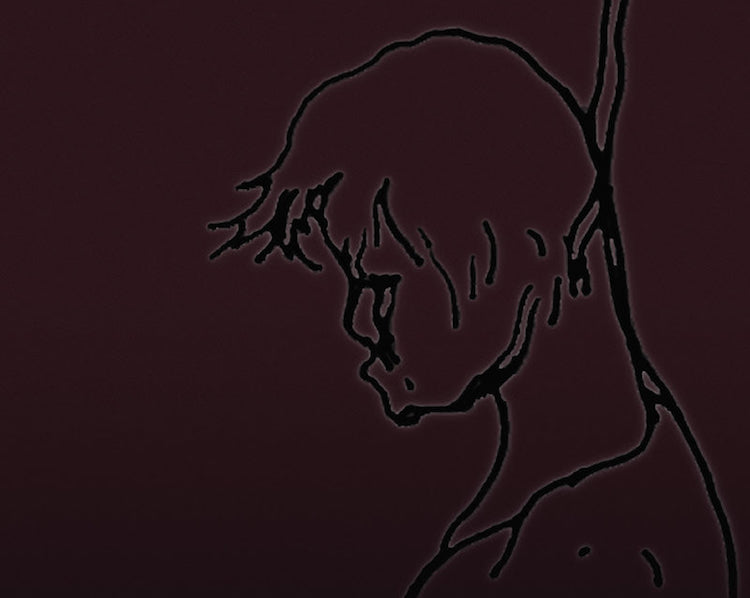
Thongchai Winichakul’s Moments of Silence: The Unforgetting of the October 6, 1976 Massacre in Bangkok, published this month, is equal parts memoir and academic analysis. Thongchai, one of Thailand’s leading historians, is a survivor of the 6th October massacre, and the book begins with his personal account of that day and its aftermath. The massacre was swept under the carpet for decades and, in fact, it’s primarily due to Thongchai’s efforts that it’s still commemorated at all: he organised an exhibition marking the twentieth anniversary in 1996. This book now serves as a permanent reminder of the inexplicably savage event.
Forty-six people were killed on 6th October, when militia groups and state forces stormed Thammasat University, though there has been no accountability and the attackers have never been prosecuted. Instead, the massacre remains officially whitewashed, conspicuously absent from the national history curriculum. As Thongchai explains, “the silence about the massacre speaks loudly about Thai society in ways that go beyond the incident itself: about truth and justice, how Thai society copes with conflict and its ugly past, about ideas of reconciliation, the culture of impunity, and rights, and about the rule of law in the country.”
Thongchai has interviewed relatives of the victims, including Jinda and Lim Thongsin, whose son Jaruphong was killed. The chapter on the Thongsin family’s long search for closure is truly heartbreaking. He also sought out some of the perpetrators, such as General Uthan Sandivongse (in charge of anti-Communist radio propaganda, and described in the book as the “most infamous propagandist in modern Thai history”). Thongchai’s encounters with “the Wolf who devoured the Lamb” recall the documentary The Look of Silence, in which a survivor of the Indonesian Communist purge confronts those responsible for the atrocities.
Moments of Silence is also notable as the first commercial book to reproduce the incendiary Dao Siam (ดาวสยาม) front page that sparked the massacre. (The front page was included in an art book published last year, though it was given only to participants in a research study.)
Forty-six people were killed on 6th October, when militia groups and state forces stormed Thammasat University, though there has been no accountability and the attackers have never been prosecuted. Instead, the massacre remains officially whitewashed, conspicuously absent from the national history curriculum. As Thongchai explains, “the silence about the massacre speaks loudly about Thai society in ways that go beyond the incident itself: about truth and justice, how Thai society copes with conflict and its ugly past, about ideas of reconciliation, the culture of impunity, and rights, and about the rule of law in the country.”
Thongchai has interviewed relatives of the victims, including Jinda and Lim Thongsin, whose son Jaruphong was killed. The chapter on the Thongsin family’s long search for closure is truly heartbreaking. He also sought out some of the perpetrators, such as General Uthan Sandivongse (in charge of anti-Communist radio propaganda, and described in the book as the “most infamous propagandist in modern Thai history”). Thongchai’s encounters with “the Wolf who devoured the Lamb” recall the documentary The Look of Silence, in which a survivor of the Indonesian Communist purge confronts those responsible for the atrocities.
Moments of Silence is also notable as the first commercial book to reproduce the incendiary Dao Siam (ดาวสยาม) front page that sparked the massacre. (The front page was included in an art book published last year, though it was given only to participants in a research study.)
27 April 2020
Cultures at War
The cover depicts Mitr Chaibancha as the Red Eagle, and in one chapter Rachel V. Harrison discusses the character’s political subtext. In Mitr’s final film, he vanquishes a Red Eagle imposter—“his heroic guise has been commandeered by leftists”—and is transformed into the Golden Eagle, “epitomizing Thailand’s Cold War struggle with the communist enemy.”
Other Thai films of the Cold War era featured more pernicious anti-Communist messages. Harrison’s essay includes a close reading of หนักแผ่นดิน (‘scum of the earth’), a notorious propaganda film that glorifies the royalist paramilitary Village Scout movement.
Thailand’s anti-Communist purge ultimately led to the ‘red barrel’ killings and the 6th October 1976 massacre. The Moonhunter (14 ตุลา สงครามประชาชน) and Pirab (พิราบ) dramatise the decisions of radical students to join the Communist insurgency. Santikhiri Sonata (สันติคีรี โซนาตา), A Letter to Uncle Boonmee (จดหมายถึงลุงบุญมี), Uncle Boonmee Who Can Recall His Past Lives (ลุงบุญมีระลึกชาติ), and the exhibition Anatomy of Silence (กายวิภาคของความเงียบ) interrogate northern Thailand’s violent anti-Communist legacy.
22 April 2020
Apichatpong Weerasethakul
Apichatpong Weerasethakul explains why he was targeted by Thailand’s film censors: “Maybe they wanted some money, under the table”. (This is an extract from an interview in Thai Cinema Uncensored, which will be published later this year.)
Pen-ek Ratanaruang
Pen-ek Ratanaruang discusses the problem of self-censorship and the sensitive footage he couldn’t risk showing to the censors: “We’ll just have to bury it in the ground somewhere!” (This is an extract from an interview in Thai Cinema Uncensored, which will be published later this year.)
Yuthlert Sippapak
Yuthlert Sippapak explains his battle with the Thai military over the film Fatherland (ปิตุภูมิ): “They don’t want the truth. I want the truth.” (This is an extract from an interview in Thai Cinema Uncensored, which will be published later this year.)
21 April 2020
Kubrick by Kubrick
Much more extensive extracts from Ciment’s recordings were broadcast on French radio in 2011, though the material in the documentary has improved sound quality (thanks to noise reduction). Some extracts also appeared in Making Barry Lyndon. Extended interviews with Alfred Hitchcock (Hitchcock/Truffaut) and Orson Welles (The Lost Tapes of Orson Welles; This Is Orson Welles) have also been released in audio format.
If your main source material is an audio tape, how can you make a visually appealing documentary film? Monro follows the pattern previously adopted by other documentaries built around audio recordings: as in Marlene and Listen to Me Marlon, a tape recorder plays while the camera prowls around a set. In this case, the set is a recreation of the bedroom from 2001: A Space Odyssey, and the audio is supplemented with vintage talking-head clips, shown on an old CRT television (just like the TV playing Summer of ’42 in The Shining).
Other Kubrick interview recordings have also been released in recent years. The collector’s edition of The Stanley Kubrick Archives included a CD featuring a 1966 Kubrick interview by Jeremy Bernstein for The New Yorker. A 1987 Kubrick interview by Tim Cahill for Rolling Stone was issued as an episode of The Kubrick Series podcast. Japanese TV producer Jun’ichi Yaoi interviewed Kubrick by telephone in 1980, and VHS video footage of the interview was released online in 2018.
20 April 2020
The Awful Truth
The Awful Truth established the suave persona that would become synonymous with Grant for the remainder of his career. It’s one of the greatest screwball comedies, a subgenre that emphasised farcical action, fast-paced delivery, witty repartee, and battle-of-the-sexes humour.
Leo McCarey’s direction is a notch below that of Howard Hawks, who made the screwball classics Bringing Up Baby and His Girl Friday (both also starring Grant), though The Awful Truth is a more satisfying film. In Bringing Up Baby, Grant’s character is absent-minded and ineffectual, and the havoc wreaked on him is rather exasperating. His Girl Friday’s frenetic pace is impressive though exhausting. In contrast, The Awful Truth feels more sophisticated, and its satirical swipes at the institution of marriage are as sharp as ever.
The film ends with a touching scene clearly modelled on the Walls of Jericho sequence from the popular romantic comedy It Happened One Night (which is sometimes—incorrectly, I would argue—described as the first screwball comedy). In turn, The Awful Truth’s essential premise—Cary Grant jeopardising his (ex) wife’s engagement to a rube played by Ralph Bellamy—was repeated in His Girl Friday.
19 April 2020
The Criterion Collection
Dr Strangelove
The Criterion laserdisc presented Dr Strangelove “in its original split-format aspect ratio for the first time.” The film alternated between 1.66:1 and 1.33:1, as it had on its original theatrical release. (Criterion’s Lolita laserdisc also featured these alternating ratios.) When Dr Strangelove was released on DVD for the first time, in 1999, the split-format was retained, though all subsequent releases have been matted to 1.66:1. Sadly, the Criterion blu-ray, released in 2016, is also framed at 1.66:1, though it does have an uncompressed mono soundtrack.
The blu-ray’s supplementary features include an extraordinary new discovery: an exhibitor’s trailer of highlights from the film, narrated by Kubrick himself (“Please remember, as you watch this, that the material is uncut”). The disc also includes an interview with Mick Broderick, author of the excellent Reconstructing Strangelove. The packaging is equally impressive, with reproductions of the “miniature combination Russian phrasebook and Bible” and the “Plan R” dossier.
15 April 2020
Coronavirus Lockdown

Suthep Thaugsuban and his anti-government protesters launched an unsuccessful ‘Shutdown Bangkok’ campaign in 2014, though the current coronavirus pandemic has led to a global shutdown. Bangkok is under lockdown, and many events in the city have been cancelled. These include a gala screening of A Man Called Tone (โทน) at the Scala cinema, and the สยองขวัญ Uncut (‘horror uncut’) season at Thammasat University. Some films were shown last month at the Thai Film Archive in Salaya, though their screening of Dang Bireley’s and Young Gangsters [sic] (2499 อันธพาลครองเมือง) on 20th March was cancelled. Screenings of Manhattan at the House Samyan cinema, originally scheduled for 28th and 29th March, have been postponed.
13 April 2020
Blond Ambition World Tour

Today marks the 30th anniversary of Madonna’s Blond Ambition World Tour, which began in Japan on 13th April 1990. A defining moment in the history of popular culture, the tour was as much a theatrical presentation as a musical concert. The tour also marked the height of Madonna’s global celebrity, and in the intervening decades, as audiences have become increasingly fragmented, perhaps only Taylor Swift has achieved the same level of name recognition.
Blond Ambition is remembered today largely for its costumes and controversies. Jean-Paul Gaultier designed a corset with a conical bra which, of all Madonna’s many stylistic reincarnations, is arguably her most iconic image. She simulated masturbation during her performance of Like a Virgin, while being fondled by dancers dressed as hermaphrodites, in an extraordinary reinterpretation of her first hit single. When the show was broadcast live on BBC Radio 1, she used the f-word more than a dozen times: “I just wanna say that ‘fuck’ is not a bad word. ‘Fuck’ is a good word...”
The tour is not available on DVD or blu-ray, though the final concert was broadcast live on HBO and released on laserdisc. An earlier concert was filmed by the Spanish TV channel TVE and broadcast throughout Europe. Highlights from the tour, filmed in Paris with multiple 35mm cameras, were included in the groundbreaking behind-the-scenes documentary Truth or Dare (retitled In Bed with Madonna outside the US), which premiered at the Cannes Film Festival in 1991.
Blond Ambition is remembered today largely for its costumes and controversies. Jean-Paul Gaultier designed a corset with a conical bra which, of all Madonna’s many stylistic reincarnations, is arguably her most iconic image. She simulated masturbation during her performance of Like a Virgin, while being fondled by dancers dressed as hermaphrodites, in an extraordinary reinterpretation of her first hit single. When the show was broadcast live on BBC Radio 1, she used the f-word more than a dozen times: “I just wanna say that ‘fuck’ is not a bad word. ‘Fuck’ is a good word...”
The tour is not available on DVD or blu-ray, though the final concert was broadcast live on HBO and released on laserdisc. An earlier concert was filmed by the Spanish TV channel TVE and broadcast throughout Europe. Highlights from the tour, filmed in Paris with multiple 35mm cameras, were included in the groundbreaking behind-the-scenes documentary Truth or Dare (retitled In Bed with Madonna outside the US), which premiered at the Cannes Film Festival in 1991.
30 March 2020
Facebook: The Inside Story
As Levy writes in his introduction, “the Facebook reputational meltdown has been epic.” That meltdown arguably began in earnest during the 2016 US election, when pro-Trump fake news was shared on Facebook more often than genuine news stories. In an interview with Kirkpatrick two days after Trump’s victory, Mark Zuckerberg dismissed concerns about the impact of fake news as “a pretty crazy idea.” Interviewed for Levy’s book three years later, Zuckerberg admits that he “might have messed that one up”.
The first half of Levy’s book covers the same ground as Kirkpatrick’s. Like Kirkpatrick, Levy was granted extensive access to Zuckerberg and dozens of other Facebook executives. (Levy also draws on “a seventeen-page chunk” of Zuckerberg’s 2006 journal.) The Facebook Effect’s assessment of the company was scrupulously balanced, though Kirkpatrick has since revised his opinion, telling the Financial Times in 2018 that Facebook represents an “extraordinary threat to democracy on a global scale”.
In Facebook: The Inside Story, Zuckerberg discusses Facebook’s early years in detail, though the chapters on more recent crises have a conspicuous lack of Zuckerberg quotes. The biggest of these PR disasters was the Cambridge Analytica data scandal, which Levy calls “the worst catastrophe in the company’s history”.
In the last of his seven interview sessions with Levy, Zuckerberg is more candid about his company’s egregious failings: “Some of the bad stuff is very bad and people are understandably very upset about it—if you have nations trying to interfere in elections, if you have the Burmese military trying to spread hate to aid their genocide, how can this be a positive thing?”
29 March 2020
The Birth of a Nation (blu-ray)
Blade Runner
(30th Anniversary Collector’s Edition)
The three-disc blu-ray set also includes the feature-length documentary Dangerous Days, a definitive guide to the making of the film. The set was originally released on DVD in 2007, and was rereleased on blu-ray in 2012 for the film’s 30th anniversary.
The Exorcist (blu-ray)
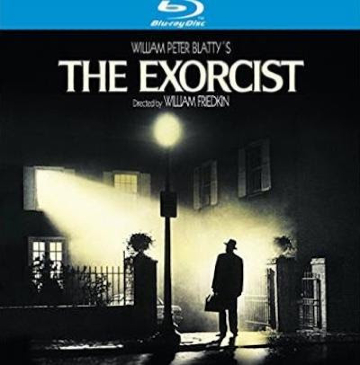
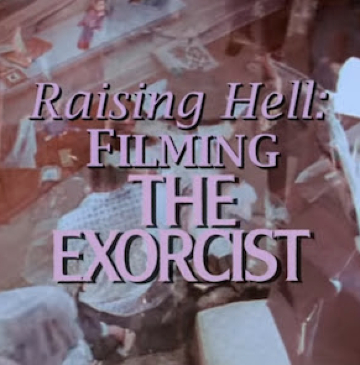
Mark Kermode’s The Fear of God is the definitive documentary on the making of The Exorcist. It was first broadcast on BBC2 in 1998, and an extended version (featuring interviews with actress Mercedes McCambridge and censor James Ferman) was released on the BBC iPlayer last year. However, the 2010 blu-ray release of The Exorcist contained a thirty-minute featurette, Raising Hell: Filming The Exorcist, which includes newly-discovered silent 16mm footage shot on the set. For the blu-ray release, Friedkin made some minor tweaks to his extended cut, removing two of the subliminal CGI demon faces he had added to The Version You’ve Never Seen in 2000.
The Criterion Collection
Night of the Living Dead
A restored version was finally released on blu-ray by the Criterion Collection in 2018. The Criterion edition also includes a workprint version of the film, with the alternate title Night of Anubis. (The workprint is silent, though audio from the theatrical version was synched with it.) The blu-ray also features newly-discovered dailies (also silent), and the release was supervised by Romero shortly before his death.
The Criterion Collection
The Tree of Life
It Came from Outer Space (blu-ray)
Intermissions are usually associated with epics such as Gone with the Wind, though they were required for all 3D films in order to change reels on both projectors. So, despite its brisk eighty-minute running time, It Came from Outer Space also had an intermission, and this blu-ray release is the first video edition to include it.
Apocalypse Now (Full Disclosure)
This release is most notable for its aspect ratio, it being the first time that the film was ever released in 2.35:1 on any video format. All previous video editions were cropped to 2.0:1—the Univisium ratio retroactively applied by cinematographer Vittorio Storaro—a fate that also befell Dario Argento’s The Bird with the Crystal Plumage (L'uccello dalle piume di cristallo).
23 March 2020
The Big Goodbye
“No. Chinatown is a state of mind.”
“A love state of mind?”
“The detective’s fucked-up state of mind.”
Screenwriter Robert Towne’s pitch to producer Robert Evans perfectly captures the essence of Chinatown. And The Big Goodbye: Chinatown and the Last Years of Hollywood, by Sam Wasson, perfectly captures the making of that extraordinary film. He recounts the on-set tensions between Faye Dunaway and the crew (“They hated her”), a melodramatic play-fight between director Roman Polanski and Jack Nicholson (“They were down to their underwear, screaming at each other”), and the creation of the film’s legendary ending (“a grand crane-up evokes a lost Hollywood—most famously the last shot of Casablanca”).
Wasson’s account is bookended by two notorious scandals in Polanski’s life: the murder of his wife, Sharon Tate; and his conviction for the rape of an underage girl. As with most five-star classics, Chinatown’s production history is broadly familiar from previous memoirs and documentaries, though The Big Goodbye is already being justifiably acclaimed as one of the best making-of books ever written.
22 March 2020
A Curious History of Sex
Bad Words
Horn cites an interesting French example, que l’on (‘that one’), which is regarded as more polite than the contraction qu’on due to the latter’s homonymy with con (‘cunt’). He also identifies what is surely the earliest instance of the practice, a comment by Cicero in his treatise on rhetoric, Orator. Cicero writes that the Latin cum nobis (‘with us’) should be rendered as nobiscum, to avoid an obscene juxtaposition (“obscænius concurrerent litterae”). The unspoken reference is to cunno bis (‘into the cunt twice’), which supports the (increasingly contested) etymological connection between cunnus (‘vulva’) and ‘cunt’.
